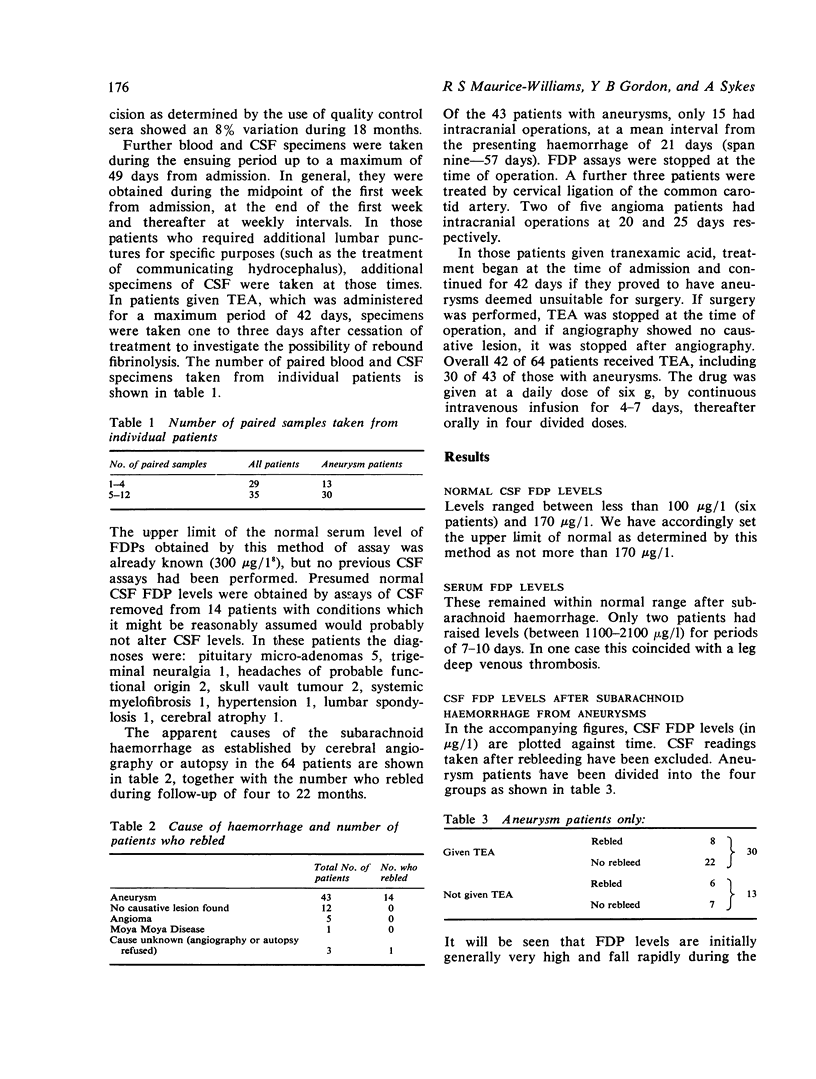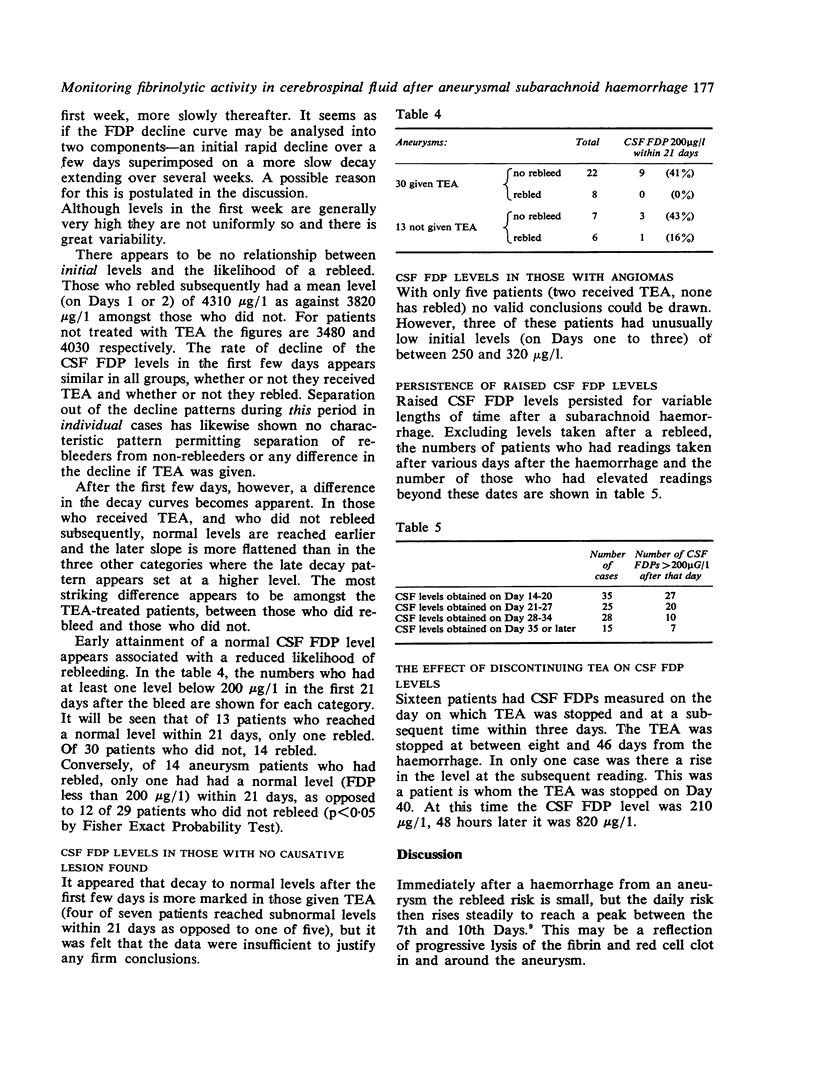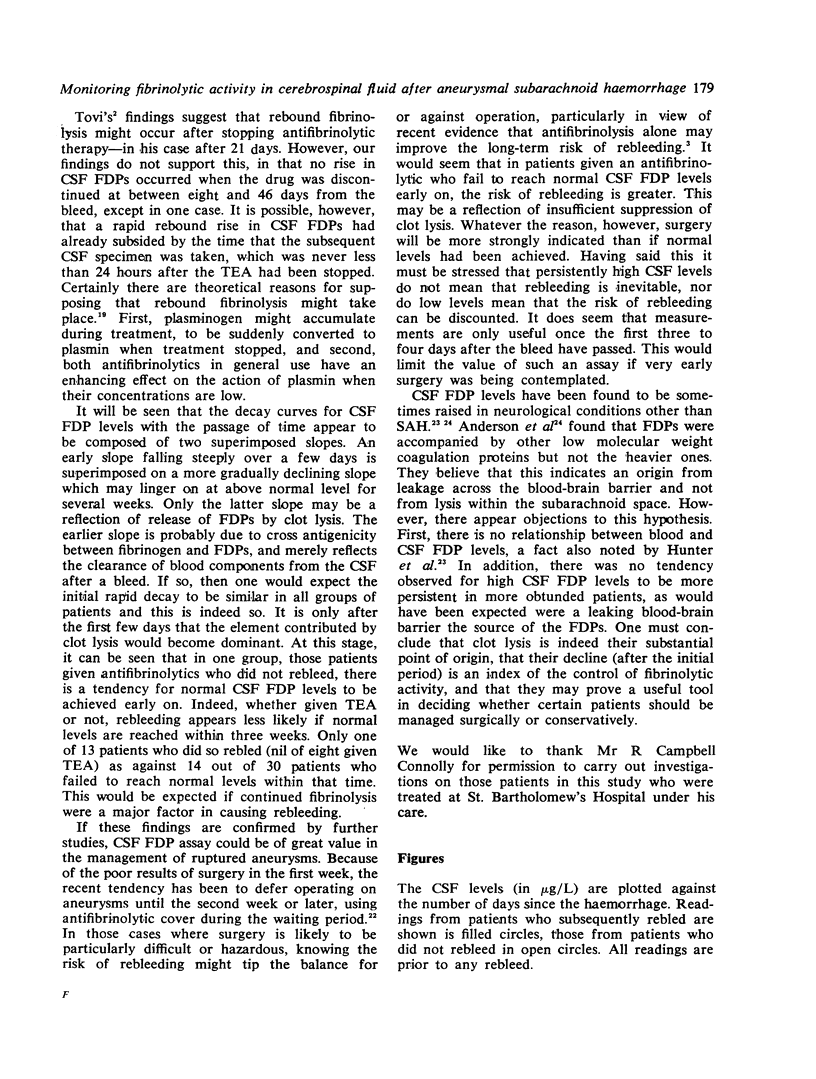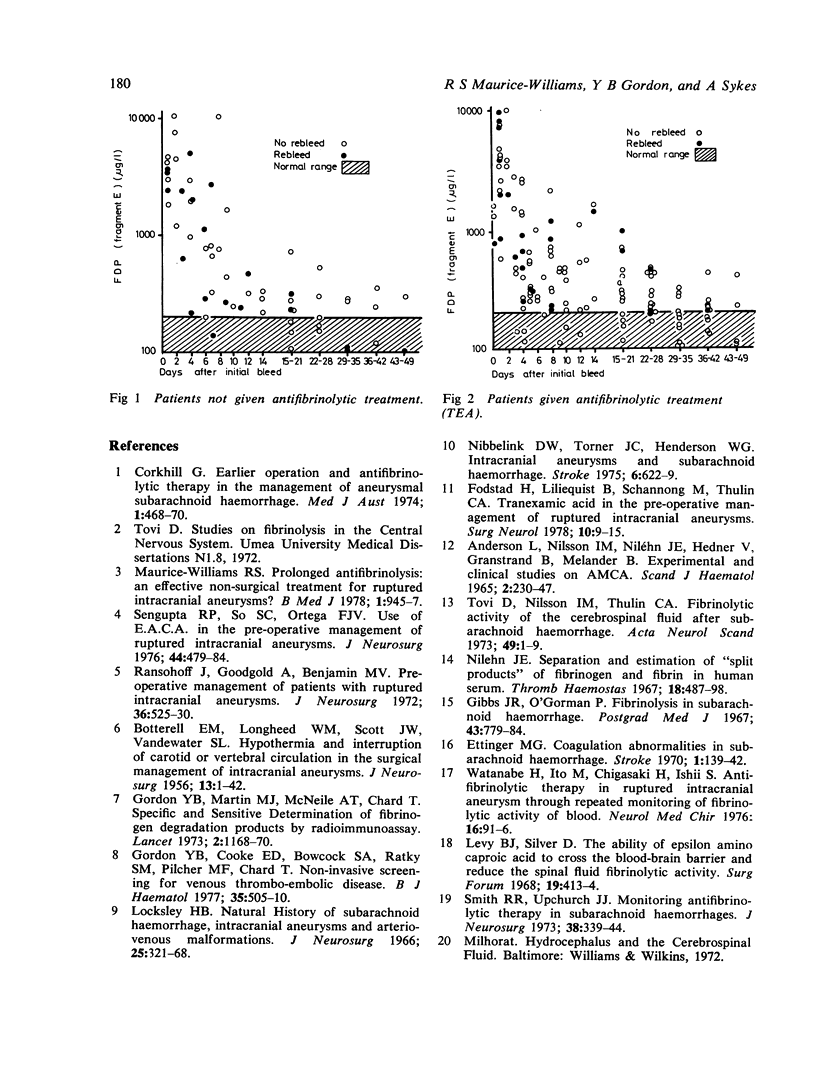Abstract
Serial assay of fibrin degradation products (FDPs) was used to monitor fibrinolytic activity in blood and cerebrospinal fluid (CSF) after subarachnoid haemorrhage (SAH) in 64 patients, 43 of whom had aneurysms. CSF levels fell rapidly from high initial values over a few days, thereafter more slowly to reach normal levels after one to six weeks. Probably only the later slow decline is a measure of fibrinolysis, which is obscured in the first few days by the cross antigenicity with FDP's of fibrinogen released by the bleed. After this phase of fibrinogen clearance, early attainment of normal FDP levels appears to be associated with a lower risk of rebleeding in cases of aneurysm. This phenomenon could be useful in deciding whether marginal cases should be treated surgically or conservatively.
Full text
PDF






Selected References
These references are in PubMed. This may not be the complete list of references from this article.
- Anderson M., Matthews K. B., Stuart J. Coagulation and fibrinolytic activity of cerebrospinal fluid. J Clin Pathol. 1978 May;31(5):488–492. doi: 10.1136/jcp.31.5.488. [DOI] [PMC free article] [PubMed] [Google Scholar]
- Andersson L., Nilsson I. M., Niléhn J. E., Hedner U., Granstrand B., Melander B. Experimental and clinical studies on AMCA, the antifibrinolytically active isomer of p-aminomethyl cyclohexane carboxylic acid. Scand J Haematol. 1965;2(3):230–247. doi: 10.1111/j.1600-0609.1965.tb01300.x. [DOI] [PubMed] [Google Scholar]
- BOTTERELL E. H., LOUGHEED W. M., SCOTT J. W., VANDEWATER S. L. Hypothermia, and interruption of carotid, or carotid and vertebral circulation, in the surgical management of intracranial aneurysms. J Neurosurg. 1956 Jan;13(1):1–42. doi: 10.3171/jns.1956.13.1.0001. [DOI] [PubMed] [Google Scholar]
- Corkill G. Earlier operation and antifibrinolytic therapy in the management of aneurysmal subarachnoid haemorrhage. Review of recent experience in Tasmania. Med J Aust. 1974 Mar 30;1(13):468–470. doi: 10.5694/j.1326-5377.1974.tb50844.x. [DOI] [PubMed] [Google Scholar]
- Ettinger M. G. Coagulation abnormalities in subarachnoid hemorrhage. Stroke. 1970 May-Jun;1(3):139–142. doi: 10.1161/01.str.1.3.139. [DOI] [PubMed] [Google Scholar]
- Fodstad H., Liliequist B., Schannong M., Thulin C. A. Tranexamic acid in the preoperative management of ruptured intracranial aneurysms. Surg Neurol. 1978 Jul;10(1):9–15. [PubMed] [Google Scholar]
- Gibbs J. R., O'Gorman P. Fibrinolysis in subarachnoid haemorrhage. Postgrad Med J. 1967 Dec;43(506):779–784. doi: 10.1136/pgmj.43.506.779. [DOI] [PMC free article] [PubMed] [Google Scholar]
- Gordon Y. B., Cooke E. D., Bowcock S. A., Ratky S. M., Pilcher M. F., Chard T. Non-invasive screening for venous thromboembolic disease. Br J Haematol. 1977 Apr;35(4):505–510. doi: 10.1111/j.1365-2141.1977.tb00616.x. [DOI] [PubMed] [Google Scholar]
- Gordon Y. B., Martin M. J., McNeile A. T., Chard T. Specific and sensitive determination of fibrinogen-degradation products by radioimmunoassay. Lancet. 1973 Nov 24;2(7839):1168–1170. doi: 10.1016/s0140-6736(73)92937-1. [DOI] [PubMed] [Google Scholar]
- Hunter R., Thomson T., Reynolds C. M., Pitcher P. M. Fibrin-fibrinogen degradation products in cerebrospinal fluid of patients admitted to a psychiatric unit. J Neurol Neurosurg Psychiatry. 1974 Mar;37(3):249–251. doi: 10.1136/jnnp.37.3.249. [DOI] [PMC free article] [PubMed] [Google Scholar]
- Levy B. J., Silver D. Treatment of subarachnoid hemorrhage: the ability of epsilon aminocaproic acid to cross the blood brain barrier and reduce the spinal fluid fibrinolytic activity. Surg Forum. 1968;19:413–414. [PubMed] [Google Scholar]
- Locksley H. B. Natural history of subarachnoid hemorrhage, intracranial aneurysms and arteriovenous malformations. J Neurosurg. 1966 Sep;25(3):321–368. doi: 10.3171/jns.1966.25.3.0321. [DOI] [PubMed] [Google Scholar]
- Maurice-Williams R. S. Prolonged antifibrinolysis: an effective non-surgical treatment for ruptured intracranial aneurysms? Br Med J. 1978 Apr 15;1(6118):945–947. doi: 10.1136/bmj.1.6118.945. [DOI] [PMC free article] [PubMed] [Google Scholar]
- Nibbelink D. W., Torner J. C., Henderson W. G. Intracranial aneurysms and subarachnoid hemorrhage. A cooperative study. Antifibrinolytic therapy in recent onset subarachnoid hemorrhage. Stroke. 1975 Nov-Dec;6(6):622–629. doi: 10.1161/01.str.6.6.622. [DOI] [PubMed] [Google Scholar]
- Niléhn J. E. Separation and estimation split "products" of fibrinogen and fibrin in human serum. Thromb Diath Haemorrh. 1967 Dec 31;18(3-4):487–498. [PubMed] [Google Scholar]
- Ransohoff J., Goodgold A., Benjamin M. V. Preoperative management of patients with ruptured intracranial aneurysms. J Neurosurg. 1972 May;36(5):525–530. doi: 10.3171/jns.1972.36.5.0525. [DOI] [PubMed] [Google Scholar]
- Sengupta R. P., So S. C., Villarejo-Ortega F. J. Use of epsilon aminocaproic acid (EACA) in the preoperative management of ruptured intracranial aneurysms. J Neurosurg. 1976 Apr;44(4):479–484. doi: 10.3171/jns.1976.44.4.0479. [DOI] [PubMed] [Google Scholar]
- Smith R. R., Upchurch J. J. Monitoring antifibrinolytic therapy in subarachnoid hemorrhage. J Neurosurg. 1973 Mar;38(3):339–344. doi: 10.3171/jns.1973.38.3.0339. [DOI] [PubMed] [Google Scholar]
- Tovi D., Nilsson I. M., Thulin C. A. Fibrinolytic activity of the cerebrospinal fluid after subarachnoid haemorrhage. Acta Neurol Scand. 1973;49(1):1–9. doi: 10.1111/j.1600-0404.1973.tb01274.x. [DOI] [PubMed] [Google Scholar]
- Watanabe H., Ito M., Chigasaki H., Ishii S. Antifibrinolytic therapy in ruptured intracranial aneurysm through repeated monitoring of fibrinolytic activity of blood. Neurol Med Chir (Tokyo) 1976;16(PT1):91–96. doi: 10.2176/nmc.16pt1.91. [DOI] [PubMed] [Google Scholar]


